Magic lights: 200-year-old projectors
We all go to the movies, and in childhood we watched filmstrips on the wall. Almost everyone has projectors in the office, some have houses built into the tablet or as a supplement to a smartphone. A slide show was firmly established in corporate culture, without which speeches and presentations are extremely rare. And how did it all start? With a magic lantern that could scare believers, entertain people at fairs and conduct lectures for students of the 17th century.
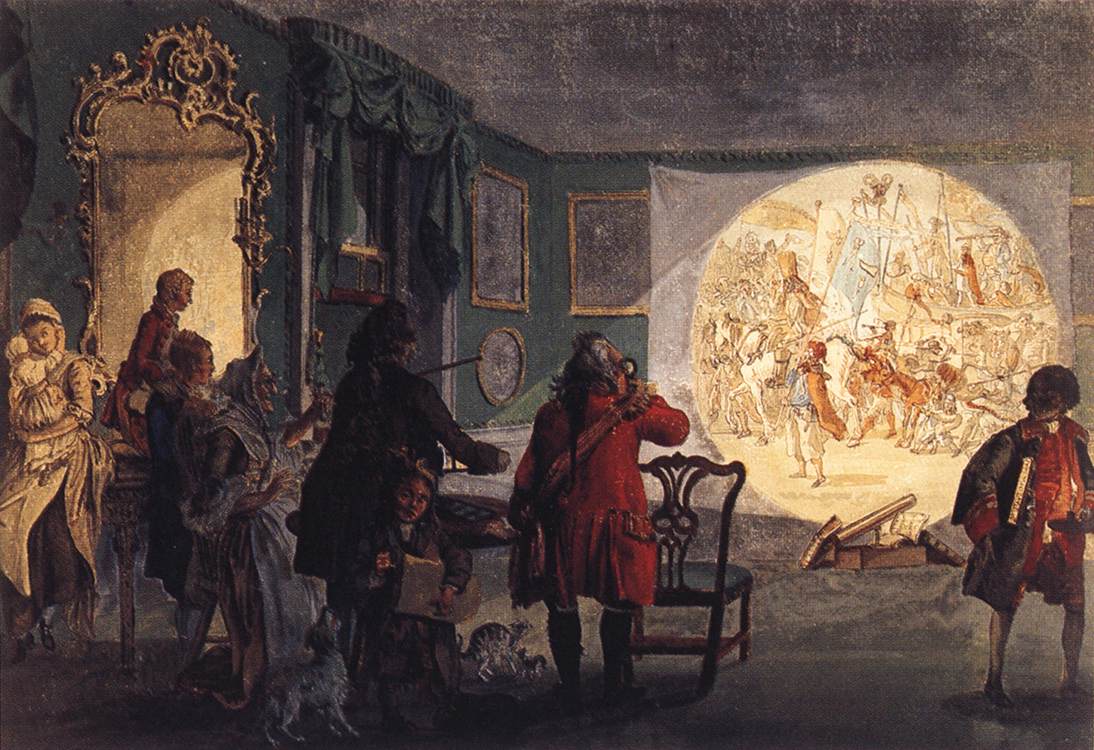
To make a projector at home, you need a smartphone, a lens and a box. Before we had mobile devices, we needed a separate light and separately - the carrier of the image. Or a candle, a kerosene lamp, an oil lamp and a glass with a pattern, which will be projected onto a plane or smoke.
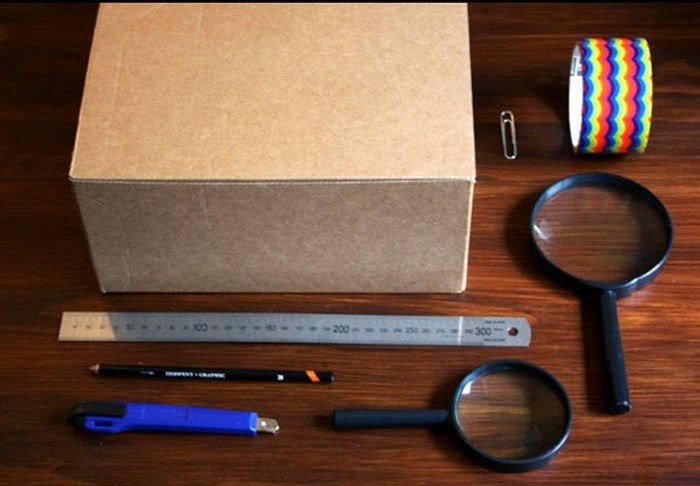
')
The first projector appeared in the XVII century and was called the "magic lantern". It was developed by a Dutch mechanic, physicist, mathematician and astronomer Christian Huygens , who studied the behavior of light in Iceland spar , released a sketch of the wave theory of light and improved the telescope.
The optical principle of “magic lights” is identical to the principle of the camera obscura, which Leonardo da Vinci allegedly used first. Huygens device consists of a body with a hole or lens. Inside is a source of light: at that time there is a candle or a lamp, and later an electric lamp. The image carrier was glass plates. In the image below you can see the chimney, which is necessary when using oil lamps.
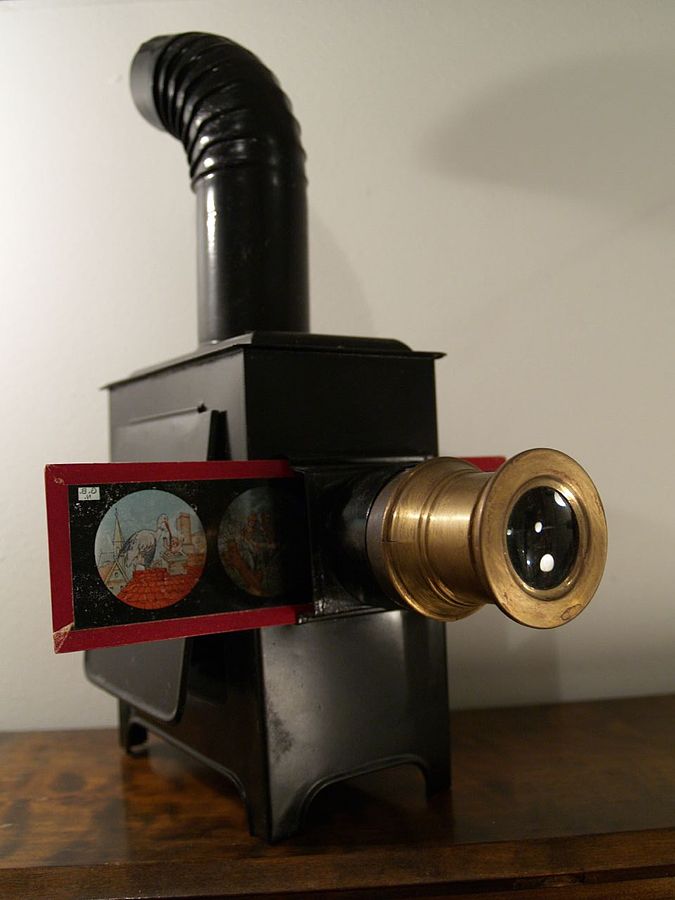
Like automatons from the 18th century, lanterns initially helped to entertain the nobility. Later, the device was used to entertain ordinary people, while sometimes the “magic lantern” was hidden and images were projected onto clouds of smoke, frightening spectators with monsters and evil spirits or telling them various stories at fairs. The Jesuits showed believers with the help of a projection the horrors of hell.
In the “Philosophical Dictionary” of Rishlé of 1719, the following definition of device was given: “A small machine that shows various ghosts and horrible monsters in the dark on a white wall; thus, the one who does not know the secret thinks that this is done with the help of magical art. ”

The “solar microscope”, as one of the variants of the “magic lantern”, was another important step on the way to cinema. The device allows you to show color images in motion. Such a device in his speeches used by Jean-Paul Marat, a doctor and politically active era of the Great French Revolution.
Already from the XVII-XVIII centuries, the technology began to be increasingly used for scientific lectures, for educational work. In 1878, the monthly Magic Lantern magazine began publishing in St. Petersburg, which was intended for public reading using “foggy pictures” - this is another name for the images received from this device.
In the modern sense of the word "speech" means a slide show with text, images and graphics. The visual row helps to remember and draw the attention of listeners to certain aspects. Today, the word "presentation" has a clear synonym - PowerPoint . And before every office began to use many computers, there were, for example, codoscopes. I remember this device from school — they were used about fifteen years ago, and probably continue.
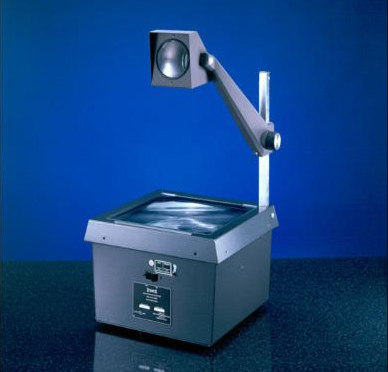
But static pictures are not as interesting as moving pictures. To show the first cartoons used special plates with multiple frames. The spread of this format of entertainment has led to the standardization of media images. It was one more step on the path of cinematic art. The “lantern” with moving pictures was called “phenakisciscope”, which meant “fraud” and “look”.
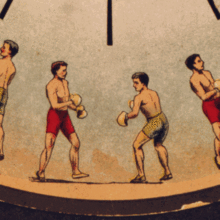


The design of the first such device was developed around 1830. And in 1878, the governor of California argued with the photographer whether the horse running at a gallop tears all four legs off the ground. Another version of the story suggests that the photographer simply carried out the order of the governor on the analysis of the movement of the horse. As a result, twelve cameras, placed along the treadmill, filmed the movement of the horse. For better results, the survey was conducted against a white wall. Then the number of cameras was increased to 24, and from the pictures they made a moving image. The photographer's name was Edward Maybridge, and he was the first to introduce the concept of “frame rate”.
The Lumiere brothers, who showed films from 1896, used 16 frames per second. This was due to the fact that the film consumption was 1 foot per second - it was easier to count. And in 1926, with the advent of sound film, a consortium of American film companies introduced a standard of 24 frames per second. This parameter was finally approved by the American Film Academy in 1932.
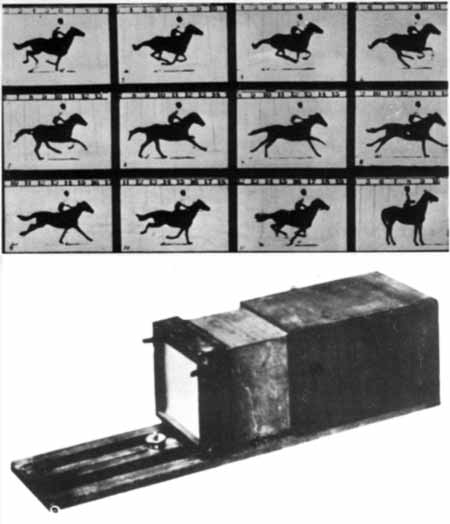
In the 19th century, lanterns, which had long ceased to be exclusively high-class entertainment, became available for home use by a simple (almost) mortal. Lights began to produce more and more, using a variety of types of buildings. There were lights in the form of houses, churches and Chinese pagodas, carriages and cars.
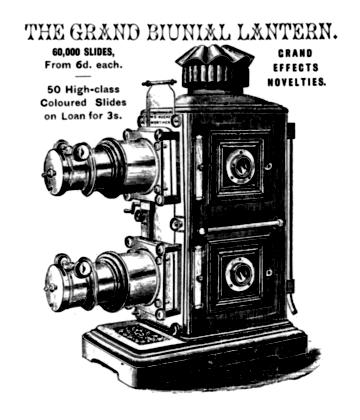

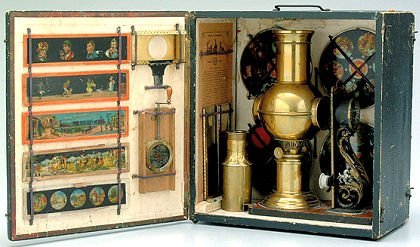
Electric overhead projectors replaced the lamps with oil lamps. In fact, such devices are not much different from the "magic lights" two hundred years ago, except for the automatic scrolling through the slides and the presence of a light bulb.

In my childhood I had FD2 - I recognized it from the photo below.

Projector FD2. A source

Overhead projector Alpha 35-50. A source

Svitaz-Auto overhead projector. Source: Avito
Film scopes were popular in the USSR - this is the same slide projector, but instead of slides it used roll filmstrips. And did one of you parents, as a child, before bedtime, show tales about Chipollino, Aibolit Little Red Riding Hood or even Alice from the 21st century on the wall?

To make a projector at home, you need a smartphone, a lens and a box. Before we had mobile devices, we needed a separate light and separately - the carrier of the image. Or a candle, a kerosene lamp, an oil lamp and a glass with a pattern, which will be projected onto a plane or smoke.

')
The first projector appeared in the XVII century and was called the "magic lantern". It was developed by a Dutch mechanic, physicist, mathematician and astronomer Christian Huygens , who studied the behavior of light in Iceland spar , released a sketch of the wave theory of light and improved the telescope.
The optical principle of “magic lights” is identical to the principle of the camera obscura, which Leonardo da Vinci allegedly used first. Huygens device consists of a body with a hole or lens. Inside is a source of light: at that time there is a candle or a lamp, and later an electric lamp. The image carrier was glass plates. In the image below you can see the chimney, which is necessary when using oil lamps.

Like automatons from the 18th century, lanterns initially helped to entertain the nobility. Later, the device was used to entertain ordinary people, while sometimes the “magic lantern” was hidden and images were projected onto clouds of smoke, frightening spectators with monsters and evil spirits or telling them various stories at fairs. The Jesuits showed believers with the help of a projection the horrors of hell.
In the “Philosophical Dictionary” of Rishlé of 1719, the following definition of device was given: “A small machine that shows various ghosts and horrible monsters in the dark on a white wall; thus, the one who does not know the secret thinks that this is done with the help of magical art. ”

The “solar microscope”, as one of the variants of the “magic lantern”, was another important step on the way to cinema. The device allows you to show color images in motion. Such a device in his speeches used by Jean-Paul Marat, a doctor and politically active era of the Great French Revolution.
Already from the XVII-XVIII centuries, the technology began to be increasingly used for scientific lectures, for educational work. In 1878, the monthly Magic Lantern magazine began publishing in St. Petersburg, which was intended for public reading using “foggy pictures” - this is another name for the images received from this device.
In the modern sense of the word "speech" means a slide show with text, images and graphics. The visual row helps to remember and draw the attention of listeners to certain aspects. Today, the word "presentation" has a clear synonym - PowerPoint . And before every office began to use many computers, there were, for example, codoscopes. I remember this device from school — they were used about fifteen years ago, and probably continue.

But static pictures are not as interesting as moving pictures. To show the first cartoons used special plates with multiple frames. The spread of this format of entertainment has led to the standardization of media images. It was one more step on the path of cinematic art. The “lantern” with moving pictures was called “phenakisciscope”, which meant “fraud” and “look”.



The design of the first such device was developed around 1830. And in 1878, the governor of California argued with the photographer whether the horse running at a gallop tears all four legs off the ground. Another version of the story suggests that the photographer simply carried out the order of the governor on the analysis of the movement of the horse. As a result, twelve cameras, placed along the treadmill, filmed the movement of the horse. For better results, the survey was conducted against a white wall. Then the number of cameras was increased to 24, and from the pictures they made a moving image. The photographer's name was Edward Maybridge, and he was the first to introduce the concept of “frame rate”.
The Lumiere brothers, who showed films from 1896, used 16 frames per second. This was due to the fact that the film consumption was 1 foot per second - it was easier to count. And in 1926, with the advent of sound film, a consortium of American film companies introduced a standard of 24 frames per second. This parameter was finally approved by the American Film Academy in 1932.

In the 19th century, lanterns, which had long ceased to be exclusively high-class entertainment, became available for home use by a simple (almost) mortal. Lights began to produce more and more, using a variety of types of buildings. There were lights in the form of houses, churches and Chinese pagodas, carriages and cars.



Electric overhead projectors replaced the lamps with oil lamps. In fact, such devices are not much different from the "magic lights" two hundred years ago, except for the automatic scrolling through the slides and the presence of a light bulb.

In my childhood I had FD2 - I recognized it from the photo below.

Projector FD2. A source

Overhead projector Alpha 35-50. A source

Svitaz-Auto overhead projector. Source: Avito
Film scopes were popular in the USSR - this is the same slide projector, but instead of slides it used roll filmstrips. And did one of you parents, as a child, before bedtime, show tales about Chipollino, Aibolit Little Red Riding Hood or even Alice from the 21st century on the wall?
Source: https://habr.com/ru/post/400053/
All Articles